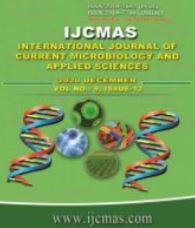


 National Academy of Agricultural Sciences (NAAS)
National Academy of Agricultural Sciences (NAAS)

|
PRINT ISSN : 2319-7692
Online ISSN : 2319-7706 Issues : 12 per year Publisher : Excellent Publishers Email : editorijcmas@gmail.com / submit@ijcmas.com Editor-in-chief: Dr.M.Prakash Index Copernicus ICV 2018: 95.39 NAAS RATING 2020: 5.38 |
In order to determine the influence of different seed hydration and dehydration techniques on growth, yield and seed quality parameters in fenugreek,an experiment was conducted in year 2019at the Field Experimentation Centre and Post Graduate Laboratory, Department of Genetics and Plant Breeding, Sam Higginbottom University of Agriculture, Technology and Sciences, Prayagraj (U.P) in RBD (Randomized Block Design) and CRD (Completely Randomized Block Design) having three and four replications respectively. The results showed that the effect of seed treatments was significant on all quantitative and qualitative characters except field emergence and seedling dry weight at 5% level of significance. Mean comparison showed that treatment T7 (CaCl2) (3%) were identified as a best treatment with maximum field emergence 93.04%, plant height (74.90 cm), number of branches per plant (2.10), early days to 50 percent flowering (34.91), number of pods per plant (15.20), number of seeds per pod (8.17), pod fresh weight (1.93 g), pod dry weight (0.91 g), seed yield per plant (93.04 g), biological yield (530.30 g) and harvest index (2.94 g) followed by T5 (KNO3) (3%) when compared with control (T0). In qualitative parameters T7 (CaCl2) (3%) showed better performance followed by T5 (KNO3) (3%) when compared with control (T0).
 |
 |
 |
 |
 |